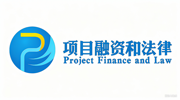BII, AfDB, EBRD provide $479m support for Egyptian solar and storage project
The Scatec-owned project in central Egypt, to be operational in 2026, is being fast-tracked as part of efforts to alleviate the country’s energy crisis.

British International Investment (BII), the African Development Bank (AfDB) and the European Bank for Reconstruction and Development (EBRD) are providing a blended finance package totalling $479.1m (€416.5) for a solar power and battery energy storage system (BESS) project in Egypt, owned by Norway’s Scatec.
This funding supports the development of a 1.1 gigawatt (GW) solar photovoltaic (PV) plant and associated 200 MWh BESS close to the River Nile, in the Nagaa Hammadi region of central Egypt. The project is owned by Obelisk Solar Power, a special-purpose vehicle set up by Scatec, which is developing several other solar energy project in the country. The finance package covers around 80% of the estimated $590m total cost of the project.
The Obelisk project is expected to generate approximately 3,000 GW-hours of additional renewable power annually. The combination of renewables plus BESS makes the power dispatchable, which will help the utility to improve grid stability and manage peak demand. The project is also forecast to cut CO₂ emissions by up to 1.4m metric tonnes annually.
Obelisk is expected to be fully operational by the second half of 2026. The power produced will be sold under a dollar-denominated 25-year power purchase agreement with the Egyptian Electricity Transmission Company, backed by a sovereign guarantee.
The largest integrated solar power and BESS project so far developed in Egypt, it is an early contributor to the country’s fast-track 4GW Emergency Renewable Energy Programme intended to tackle an energy crisis triggered by sharply-rising demand, which domestic natural gas production has been unable to meet.
Egypt has set a target of providing 42% of its power mix through renewables by 2030. As of mid-2024, solar, wind, and hydropower comprised just 11.5% of the country’s electricity generation, according to government data.
DFI commitments
Of the total $479.1m package for the Obelisk project, AfDB is contributing $184.1m, EBRD is providing up to $180m, and BII is providing a total of $115m.
AfDB’s financing includes $125.5m from the DFI’s ordinary resources, plus concessional funding from AfDB-managed special funds, the Sustainable Energy Fund for Africa and the Canada-African Development Bank Climate Fund, worth $20mn, and $18.6m respectively. A further $20m from the Climate Investment Fund’s Clean Technology Fund will also be provided via the AfDB.
The EBRD package comprises $173.5m of financing supported by $101.9m of first-loss cover guarantees from the European Fund for Sustainable Development (EFSD+) for the first 18 years, plus a $6.5m grant from the EBRD Shareholder Special Fund.
BII is providing a $100m concessional loan and a $15m returnable grant. The UK’s development finance institution said its financing was subject to drawdown conditions.
Iain Macaulay, director and head of project finance (Africa and Pakistan) at BII, told Impact investor the falling cost of battery technology was helping to make large-scale renewables-plus-energy-storage projects more affordable.

“We are starting to see a lot of PV plus battery projects across Africa and a number of other geographies, though not necessarily on this scale. We’ve seen it in Senegal and South Africa, for example” he said.
Macaulay added that the Obelisk project should help demonstrate the viability of investments in similar large-scale projects of this type in Egypt and elsewhere in Africa, potentially making them more attractive to private investors and less reliant on DFI support in future.
“The technical viability of these projects is not just about the individual technologies, it is also about how the energy fits into the grid and its benefit to the utility. Hopefully this starts to prove to utilities and developers that this type of [dispatchable power] project works well.” he said.
This is not BII’s first foray into large-scale renewables-plus-solar developments in Africa. In 2022, the DFI partnered with Standard Bank and H1 Holdings to finance Kenhardt, a large-scale renewables-plus-battery project in South Africa, also developed by Scatec. BII provided $135m senior debt investment along with an additional $26m mezzanine financing to H1 for the $1bn project to provide baseload power.
In Egypt. the International Finance Corporation (IFC) has also just announced an investment under the country’s emergency programme – a $72m debt package for an AMEA Power subsidiary to finance the integration of 300MWh of BESS into a 500MW solar photovoltaic power plant in the Aswan region, which became operational in November 2024.






